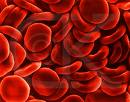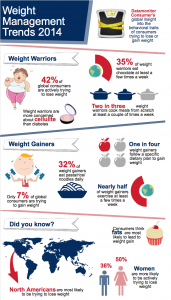
London: Overweight, tired, skin problems and infertility are just some of the symptoms of food intolerence.
Many people suffer from food sensitivities /intolerencewithout knowing it. A food sensitivity is a reaction that you may not notice directly, symptoms may appear days after eating the substance, but it may be responsible for various “minor” illnesses such as chronic fatigue, overweight, chronic inflammation, migraine, arthritis, skin problems, poor mood and attention span, breathing difficulties, gastro-intestinal orders such as Irritable Bowel Syndrome, sugar cravings, premature ageing, infertility and other conditions. This is different from a true allergy in that the reaction to the offending substance will usually happen immediately.
The ALCAT test examines the reaction of your living blood cells to foods and other substances so that you can tailor your diet for optimum health. This is not a test for true allergies. The IGE/IGG antibody response test is more suited to allergies.
There is a significant difference between the ALCAT test and IgG tests. The ALCAT test analyses the changes in the size (swelling and inflammation) and number of the white blood cells when the whole fresh blood is exposed to the individual test substances. There are many ways (mechanisms) by which the white blood cells’s may be triggered and that result in the release of inflammatory chemicals and the generation of damaging free radicals. IgG antibodies are also often present but block rather than cause reactions. Studies show that the ALCAT test correlates very well with double blind oral challenges with both foods and food additives. IgG does not. New studies show that the ALCAT test also correlates well with cytockine release where the IgG test does not. The consumer watchdog magazine WHICH recently criticised food intolerence tests other than ALCAT – read what they said here WHICH REPORT
The ALCAT test can also be used to screen for a whole host of substances that IgG cannot; such as, food additives and colourings, moulds, environmental chemicals, certain common anti-inflammatory drugs and antibiotics.
The ALCAT test, requires the patient to give a blood sample and examines the reaction to 100 most common foods costs £199.99(includes VAT).
The Alcat Test is unique. Your Alcat test results are contained in a detailed report of the bodys reaction to 100 common foods and substances including wheat, yeast and dairy. * These are category coded: red (severe intolerance, avoid at all costs for six months), orange (strong intolerance, avoid for 3-6 months), yellow (mild intolerance, avoid for three months/eat on rotation), green (acceptable, eat on rotation).
*The 100 Food Panel includes: Apple, Bakers Yeast, Banana, Barley, Beef, Black Pepper, Broccoli, Cabbage,Cantaloupe, Carrot, Casein, Cauliflower, Chicken, Cinnamon, Cocoa, Corn,CottonSeed, Cow’s Milk, Egg White, Egg Yolk, Fructose, Garlic, Gliadin, Gluten, Grape, Green Pea, Lamb, Lemon, Lettuce , Mustard, Oat, Onion,Orange, Peanut, Pear, Pork, Rice, Shrimp, Soybean, Squash, Strawberry,StringBean,Sugar, Sweet Potato, Tomato, Tuna, Turkey, Vanilla, Wheat,White Potato Almond, Asparagus, Avocado, Basil, Blueberry, Brewer’s Yeast,Brussel Sprouts, Candida Albicans, Carob, Cashew, Celery, Cherry, Clam,Coconut, Codfish, Coffee, Crab, Cranberry, Cucumber, Eggplant, Ginger,Goat’s Milk, Grapefruit, Green Pepper, Halibut, Honey, Hops, Lime, Lobster, Millet, Mushroom, Olive, Oregano, Parsley,Peach, Pecan, Pineapple, PintoBean, Plum, Psyllium, Rye, Salmon, Scallop, Sesame, Snapper, Sole, Spinach,Tea, Watermelon, Whey
Why many diets may fail
Even when dieting, the foods you eat may be preventing you from losing weight. Recent information has shed light on why some people will benefit from a diet and others will not. Our immune system reacts to the foods we eat and reactions to particular foods affect each of us differently.
In a study from Baylor Medical College in the US, researchers examined the effects of avoiding offending foods, or what is commonly referred to as hidden food allergies, were compared with low calorie dieting. The researchers were not only looking for changes in scale weight, but also a much more important measurement called body composition. Body composition is the ratio of fat to lean tissue. It is an important concern with regard to weight loss because the loss of lean tissue, as opposed to fat, is unhealthy. Lean tissue burns calories, even when youre not exercising. Loss of lean tissue, rather than fat, can set you up for the yo-yo diet effect.
In order to determine a persons hidden food allergies the Baylor researchers used a simple blood test, developed by ALCAT. They collected 100 subjects for the study who were having difficulty losing weight. Half of the subjects followed their Alcat test results and ate whatever they wanted as long as it was not indicated by the test as being a problem food. The other fifty subjects restricted their caloric intake, but did not eliminate problem foods indicated by the Alcat test.
Measurements of scale weight and body composition were taken at the beginning of the study and again one month later. The difference between the two groups was startling, 98% of the subjects following the Alcat eating program were successful in either losing weight and/or improving body composition. The calorie restriction group as a whole actually got worse, not necessarily heavier, but they lost more muscle than fat.
To the researchers, this study demonstrated that merely restricting food intake, without eliminating foods that inhibit metabolism, will not enough improve metabolic function necessary for healthy and long lasting weight loss.
Many doctors use the Alcat test as a valuable weight loss tool. Dr. Steven Lamm, author of, Thinner at Last, says, I have seen the (Alcat) technique work when absolutely nothing else has made the scale budge.
Even low carb advocates like Dr. Fred Pescatore, the former associate Medical Director of the Atkins Center and author of the bestseller, The Hamptons Diet, says, Ive been using the Alcat test in my practice for eight years. No other test is as accurate or useful.
Listen to Dr Pescatore in this video interview;
When asked why the Alcat test works so well with weight loss, ALCAT states: The wrong foods cause chronic inflammation which disrupts metabolism. Incompatible foods also disturb brain chemistry, thus causing food cravings. The allergic response also sets the stage for water retention and, for some, digestive disorders. Weight gain is caused by many factors, including our unique ability to metabolize foods. When dieting, each of us needs our own diet.”
The Alcat test can be purchased at www.thevitalityshopuk.com








 A low carbon lifestyle means better health for all of us. Eating less meat could save 45,000 lives in the UK each year.
A low carbon lifestyle means better health for all of us. Eating less meat could save 45,000 lives in the UK each year.![Reverse Type 2Diabetes [320x200]-thumb-213x320-337](http://elixirnews.com/wp/wp-content/uploads/2010/10/Reverse-Type-2Diabetes-320x200-thumb-213x320-337.jpg)
















